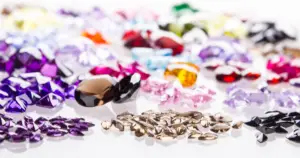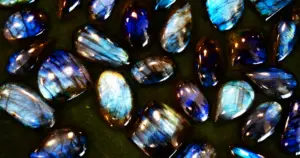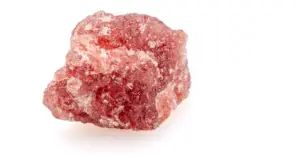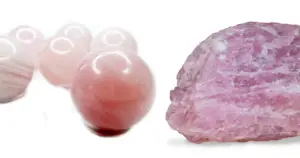How to tell if Pink Quartz is Real or Fake in 7 Easy Ways
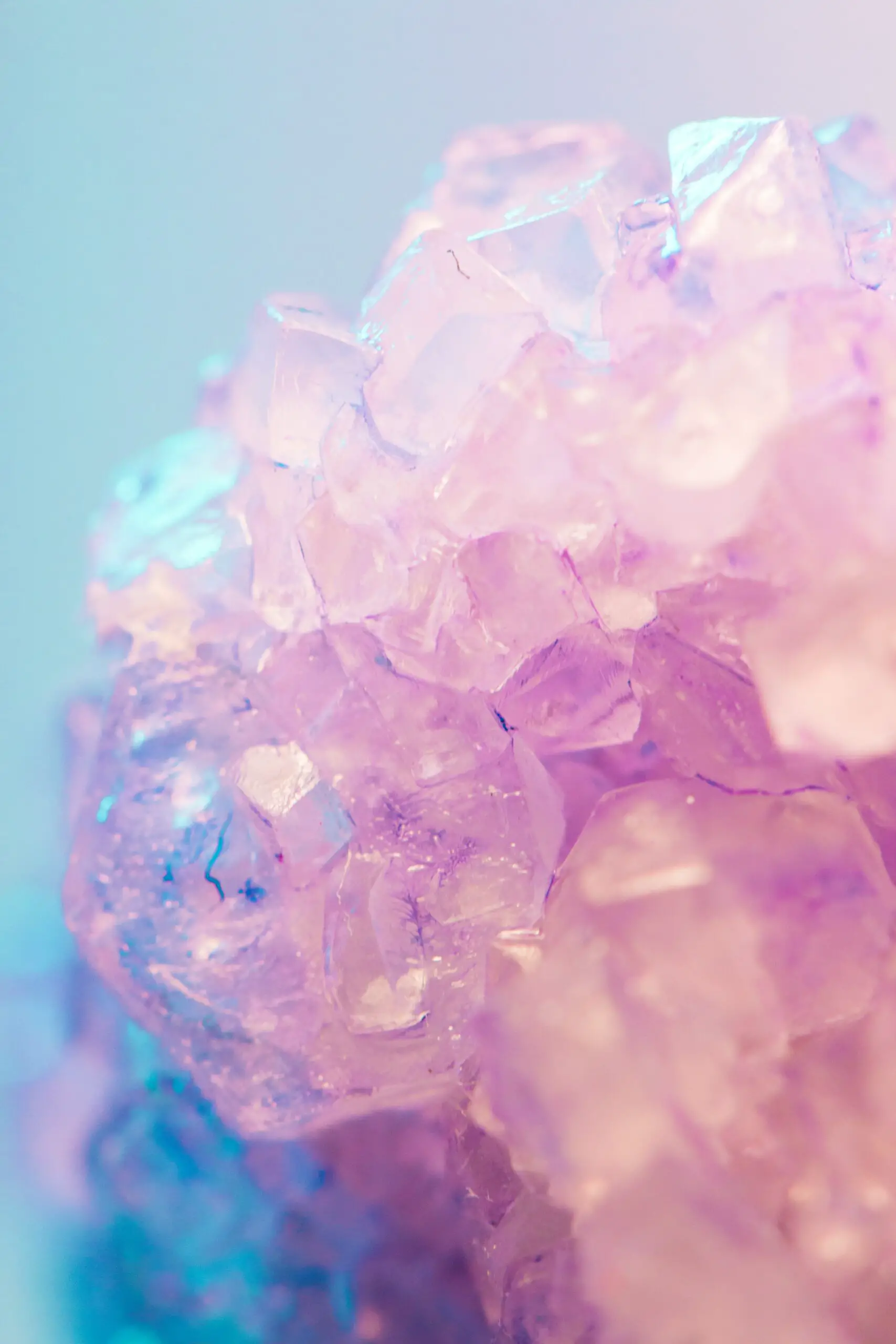
Pink Quartz is a quartz crystal, as the name suggests, of the pink variety. It has been the subject of great gemological debate and speculation for several years as it closely resembles another, more commonly occurring variety of pink-colored quartz, called the Rose Quartz. In this article, we will explore how to know if Pink Quartz is Real or Fake.
Here are our Beginner-friendly ways to identify Pink Quartz and tell it apart from Rose Quartz and other fake stones
If you came here looking to learn more about pink-colored quartz, make sure to also read about rose quartz. Rose quartz is a much more widely available variety of pink-colored quartz, both in healing and lapidary practices.
Despite the similarity in color and mineral family, the cause of the coloration in Rose Quartz is very different from the pink found in Pink Quartz.
Any discussion about whether a Pink Quartz is real or fake must begin at understanding its occurrence, crystal structure, and formations.
Learning to identify real pink quartz can help not only ward off fakes but also empower you to differentiate between similar-looking natural crystals of rhyming origins, such as the Rose Quartz.
Table of Contents
How is a Pink Quartz different from a Rose Quartz?
- Pink quartz, unlike Rose Quartz, grows in distinct crystal formations, typically on pegmatites, or smoky quartz, or other such matrix rocks. When it was first discovered, pink quartz looked so similar to Rose Quartz that it was classified as a variety of Rose Quartz that occurred in crystals
- Pink Quartz gets its color from the presence of impurities at the time of quartz formation. While Rose Quartz is formed under high heat and pressure conditions from a gaseous substrate, Pink Quartz is the result of molten impurities.
- Pink quartz’s coloration is photo-sensitive, that is, it can fade relatively easily on exposure to sunlight. If you already own Pink quartz whose color is fading, it can still be real. Rose Quartz, however, does not lose color.
- Pink quartz can range from transparent to translucent while Rose Quartz is never transparent.
How to tell if Pink Quartz is Real or Fake?
Several techniques can be deployed to identify a real Pink Quartz as distinct from such imitations that are used to imitate other quartz as dyed plastic, glass, or rose quartz which may be misnamed and marketed as pink quartz:
Observe the Crystal Formation
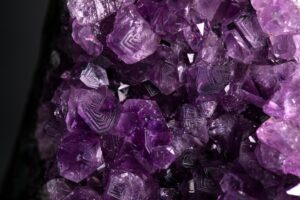
Uncut pink quartz typically occurs in transparent to translucent crystals with a roughened surface.
The crystal faces may sometimes show a stair-step-like pattern, as observed in the Amethyst crystal on the right.
Such patterns are hard to replicate on materials such as glass or plastic. This is a good test to prevent misidentification of Rose Quartz as Pink Quartz because the latter does not grow such separate parallel crystalline formations.
Conduct a Scratch Test
Pink Quartz has a hardness of 7 on the Mohs’s Scale, unlike imitations such as plastic or glass.
An easy way to check the authenticity of your Pink Quartz is to scratch it against a plain glass surface. If it scratches to glass, then you can be assured that it is real quartz.
Study the Coloration of the Crystals
Pink Quartz crystal occurs in deep to light pink colors, which fade extremely quickly when exposed to ultraviolet rays of the sun or otherwise.
Unlike Rose Quartz, which gets its characteristic pink hue from irradiation under high temperature and pressure conditions, Pink Quartz is crystallized formations of liquid silicon dioxide with aluminum and phosphorus impurities.
It also shows slight dichroism, which means that across the length of the crystal, the color may vary from a deep pink to a paler white and grey.
You can check for dichroism by placing the crystal under light and observing its coloration. If it looks consistent throughout, it is likely rose quartz or dense colored glass.
Conduct a Temperature Check
Pink quartz is always cool to touch, as opposed to glass and plastics which may take on the body temperature after some time of contact with the skin.
To check this, you can hold the crystal against your cheek or close it in your palms for about a minute or two. If it loses heat readily, then it is likely plastic.
Observe Crystal’s Interaction with Light
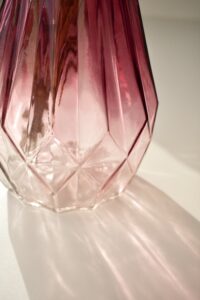
Pink Quartz, due to its distinct crystal structure, is much more transparent than a rose quartz’s relatively translucent intergrown, rock-like appearance.
Faceted rose quartz may sometimes appear with milky inclusions, but that is never the case with pink quartz.
Polished rose quartz is also much more prone to needle-like inclusions, which cause light coming from a pointed source like torchlight, to appear on its surface in star-shaped silken lines.
Pink quartz crystals, on the other hand, typically disperse light in multiple directions. Unlike colored glass, however, the light dispersion would not be of any particular color.
One way to test if a Pink Quartz is real is to point a torch at it and observe how it behaves.
Lookout for Crystal Shapes
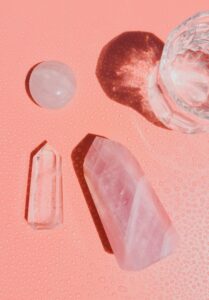
Pink Quartz, unlike Rose quartz, due to its transparent and interwoven crystallography, does not lend itself easily to facetting and tumble polishing in such shapes as tumble stones, beads, wands, figurines, etc.
So if you are being sold pink quartz face rollers or reflexology tools, which are much too light, it is likely plastic or glass.
Check the Reaction to Fire
One fool-proof but potentially destructive test to weed off fake crystals is to observe their reaction to fire.
You can do this by burning a needle near the surface of your crystal. If the stone burns with an odor, it is plastic.
Real pink quartz is much too sturdy to be affected by fire, so if your crystal is real, fire will only leave a black, sooty deposit on the surface, which can be easily wiped off.
Real pink quartz will only be slightly warm to touch after contact with fire and will cool down extremely quickly. Plastic will instantly melt around fire and glass will also be too hot to touch.
Final Comments
Pink Quartz is a crystal of great clarity and healing from past patterns of hurt and dismay. This crystal is esoteric as it is unique. It demands that you bring the full sensorium of yourself in identifying, procuring, and using it.
Although it looks very similar to and is often mistaken for the rose quartz, the origin of its color and crystallography are entirely different from that of Rose Quartz, and therefore play different roles in healing and ornamentation practice.
In this beginner-friendly guide, we have offered you a list of visual and tactical cues to identify a real Pink Quartz from fakes. These include the crystal’s formation and roughness, its hardness, and the ability to scratch softer surfaces.
The shape and luster of a Pink Quartz help tell it apart from fakes and also set it apart from its often confused family: Rose Quartz.
If you are an amateur crystal user or a beginner to the world of Pink Quartz, remember to be gentle with yourself if you are not able to readily tell the differences between crystals.
After all, it took gemologists several years of debate and empirical research to identify Pink Quartz for its distinctiveness from Rose Quartz.
If you are crystal-savvy, what advice would you give your amateur self when picking crystals and trying to dodge imitations?
